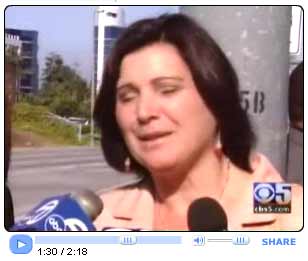It's an outstanding reminder that when it comes to stadium finance, it's increasingly less about who pays the initial bills than about who reaps the revenues down the road.
The experience of Aberdeen is a cautionary tale for any city considering the possibility of operating a professional sports stadium. As Aberdeen's current mayor said in 2005,
Municipalities, especially this one, shouldn't be in this type of business.
The San Francisco 49ers have requested not just $287,000,000 in public assets for the construction of the stadium. They have also requested that the City of Santa Clara create a Sports Authority, which would both assume an additional $330,464,000 in bond debt and operate the stadium.
And taking on debt and operating the stadium are two additional risks, as the experience of Aberdeen demonstrates.
I hope you'll read the full article at the Baltimore Sun website, but here are a few interesting highlights:
Every game has been a sellout since the 6,000-seat stadium opened in 2002. Companies such as Bank of America have paid to be sponsors. . . .
But even on days like this, when the city-owned stadium is packed, Aberdeen loses money.
This is an important cautionary note — a full stadium does not equal profit for the city.
The Harford County community owes $6.7 million in stadium-related debt, and millions in interest, on a payment schedule stretching to 2022. The city's stadium fund has posted operating losses that total more than $1 million since 2001, forcing Aberdeen to dip into its treasury.
And these debts and operating losses are for a small, minor league stadium. The debt and potential for operating losses will be much bigger for an NFL stadium.
In closed-door negotiations, Aberdeen signed over to the Ripken businesses most of the money to be made from the baseball games. City officials had intended to cover the bills in other ways, including fees, taxes and a deal with Nottingham Properties to develop adjacent land. But the city's contract with Nottingham contained no penalty for delay. The land remains mostly acres of dirt.
Under the current proposal from the San Francisco 49ers, the breakdown of revenue streams is the same, with the notable exception of stadium naming rights, personal seat licenses, concessionaire rights, etc. But these revenue streams are NOT profit for the Stadium Authority — the 49ers' proposal calls for the Stadium Authority to borrow against this expected revenue in order to build the stadium. Like the Aberdeen IronBirds, the San Francisco 49ers will make most of the money from the actual football games.
The city, with a general fund budget at the time of just $7.6 million, pledged $4 million.
Most minor-league stadiums are owned by larger jurisdictions that can spread the costs over bigger budgets - the situation in Prince George's County, where the minor-league stadium is overseen by a multi-jurisdictional authority.
What's particularly interesting to me about these numbers is that even in the case of a minor league baseball team, cities look to spread the cost over a larger region. And Aberdeen pledged a little over half of its annual general fund budget to the project. The current San Francisco 49ers' proposal calls for Santa Clara to take on FOUR AND A HALF TIMES its annual general fund budget for a stadium. The scale of the subsidy request is simply shocking.
The city was counting on a ticket tax and the potential for parking fees, advertising on a billboard and non-baseball events. The tax raised about $140,000 the first season, but the city had little success attracting concerts, banquets or similar functions. In 2002, those events brought in only $2,000.
The trickle-down profit scenario outlined in the 49ers' proposal depends on not simply attracting other events, but making a profit from these events. If there is no profit from outside events, no money will be set aside for capital improvements, and I'm sure we can all guess who will be on the hook for those expenses.
"The Ripken family has put Aberdeen on the map," said [Former Mayor Douglas S.] Wilson, after rattling off the names of major leaguers such as Orioles right fielder Nick Markakis who have passed through Aberdeen. "To create that in a small government, to be able to have a minor-league baseball team, I mean, it's pretty phenomenal."
We've seen the same sort of thinking here in Santa Clara. Instead of addressing the very real financial costs and potential risks, stadium supporters draw on such far-fetched comparisons as the Wright brothers and the moon landing.
Instead of such wishful thinking, we need to focus on the very real financial risks involved in the stadium business.
After all, if there was money to be made in operating a stadium, don't you think the 49ers would want to do that themselves?







